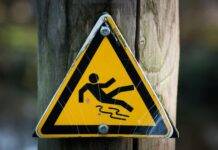
100% Tie Off in Height Safety
"100% tie off" typically refers to a safety practice in industries like construction or climbing, where individuals are required to secure themselves with safety harnesses or ropes at all times to prevent falls or accidents. It's a safety protocol that emphasizes always being secured to a stable structure or anchor when working at heights or in dangerous environments.“100% tie off” is a critical safety measure primarily employed in industries where working at heights poses significant risks. It mandates that individuals working in elevated environments must secure themselves entirely with safety equipment, such as harnesses, lanyards, or lifelines, to a reliable anchorage point.
This practice is crucial to prevent falls and minimize the impact of potential accidents. It ensures that even if a worker slips or loses balance, they remain connected to a secure point, preventing a free fall and reducing the risk of severe injuries or fatalities.
Employers typically enforce strict policies regarding 100% tie off to prioritize the safety of their workers. Regular training, proper equipment inspection, and adherence to safety protocols are essential elements in maintaining a safe working environment, particularly in industries like construction, maintenance, window cleaning, and rope access work.
Compliance with the 100% tie off rule significantly reduces the chances of falls and ensures that individuals working at heights are consistently secured, promoting a safer and more controlled work environment.
Importance of “100% Tie Off” in Height Safety:
- Preventing Falls: Ensures workers are continuously secured to prevent free falls in case of slips or imbalance.
- Minimizing Risks: Reduces the severity of potential accidents by keeping individuals connected to secure anchor points.
- Safety Mandate: Enforced policy in industries like construction, maintenance, and rope access work for elevated workspaces.
- Worker Protection: Prioritizes employee safety by mandating the use of safety harnesses, lanyards, and lifelines.
- Regulated Compliance: Strict adherence to safety protocols, regular equipment inspection, and comprehensive training to maintain a safe working environment.
- Industry Applications: Vital in construction, window cleaning, maintenance, and any work involving heights for accident prevention.
- Controlled Work Environment: Ensures a safer, more controlled workplace by consistently securing workers at elevated positions.
Fall Protection Plan Requirements
Work at Height Toolbox Talk Meeting
























